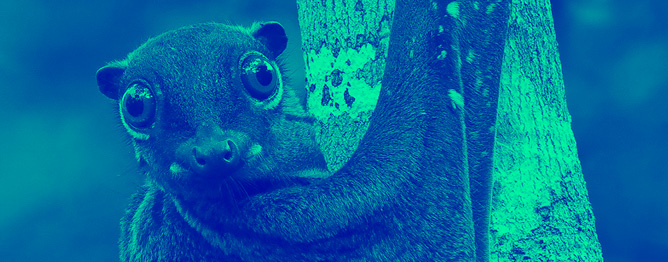There are only two official languages in the Philippines, a nation in Southeast Asia: English and Filipino, which is a standardized form of Tagalog, a language indigenous to the islands. Over the years, Tagalog speakers have adopted countless words and expressions into their language, resulting in a unique dialect: Taglish (a combination of Tagalog and English). But the exchange has gone the other way, too.
Many of the words from Tagalog and other languages indigenous to the Philippines that have been adopted into English reflect the culture, flora, and fauna of the islands. While many of these terms describe things specific to life in the Philippines, others have gone global and become part of everyday English vocabulary.
Did you know you were speaking these foreign words?
boondocks/boonies
If you’re aware of any word that came to English from Tagalog, it’s probably boondocks. Boondocks is American slang that was coined in the early 1940s. The word comes from the Tagalog word bundók, which literally means “mountain,” and is used as shorthand to refer to the rural, mountainous areas of the country.
When it was adopted into English as boondocks by American soldiers occupying the country during and after the Philippine-American War, the literal meaning was abandoned, and it came to describe any rural, out-of-the-way area.
By the 1960s, boondocks had been shortened even further to boonies.
colugo
One of the many unique animals that call the forests of the Philippines home are colugos, also known as flying lemurs. (They aren’t actually lemurs.) Colugos are pretty strange creatures. They look like bats, with adorable, big, round eyes and short fur, but they don’t fly. They glide, like flying squirrels. Actually, colugos are better gliders than flying squirrels. (Seriously, it’s incredible.)
Colugos are native to Southeast Asia. While its exact origin is unknown, the name may come from one of the hundreds of indigenous languages from that region of the world, such as Tagalog or Maranao. Colugos may make up to 90 percent of the diet of the Philippine eagle. In many indigenous languages, the name for the Philippine eagle is kolago or a variation of this word. It’s possible that early English explorers mistook the name of the predator for that of its prey.
cooties
If you attended elementary school here, you might have heard about cooties. As the playground rumors tend to go, you can get this imaginary disease from hanging out with the wrong people. But cootie is actually an informal term for a louse, such as a head louse.
The word cooties was adapted into English from the Malay language, which was once the lingua franca of the Philippines when trading with the Spanish. In Malay, the word kutu means “parasite.” The -ie at the end was added to make it sound more like other English words. While it exists in the singular, cooties is the more familiar plural form.
dugong
Along with the colugo, another unique and fascinating species native to the Philippines is the dugong. Dugongs are similar to manatees; they are slow-moving, aquatic, herbivorous mammals. The word for dugong in Malay and other Filipino languages is dūyong, and it was first recorded in English as dugung in 1751. Later, the name was popularized by a prominent French naturalist as dugon.
Dugongs are peaceful, beautiful creatures. While some in the Philippines consider them symbols of bad luck, they are celebrated in nearby Papua New Guinea as the national animal.
halo-halo
Filipino cuisine is legendary for its quality—and its creativity. The popular ice cream dish halo-halo is no exception. Halo is Tagalog for “mix,” which is exactly what halo-halo, or haluhalo, is: a mix of evaporated milk, crushed ice, flavorings like coconut and jackfruit, generally topped with ice cream. While halo-halo itself is a distinctly Filipino dish, it has its roots in the Japanese shaved-ice desserts known as Kakigōri, brought to the islands by Japanese migrants.
In recent decades, halo-halo has become popular in places with large Filipino diasporas, like southern California.
panguingue
Another Filipino export is the gin rummy-like card game of panguingue [ pahng-geeng-gee ]. Panguingue, also known as Pan, comes from the Tagalog word pangguinggui. This game is played with a unique deck with the 10s, 9s, and 8s removed and a huge number of cards: anywhere from 320 to 440 (that’s about eight decks). Similar to poker or other gambling card games, chips or markers are used to keep track of the stakes. Players win by discarding runs of cards (called a meld) until all are discarded.
Panguingue was particularly popular in the American Southwest. It’s not clear exactly where the game originated—whether it was created by Americans who learned a version of it in the Philippines or if it was brought by Filipino immigrants to the United States. Either way, it was popular in gambling halls in places like Las Vegas at the turn of the 20th century. Since then, panguingue has declined in popularity, but it is still played in parts of southern California.
ylang-ylang
The yellow flowers of the ylang-ylang tree are beautiful and fragrant. In the Philippines, they are traditionally used to make flower necklaces for special occasions. Around the world, the ylang-ylang flower is used to scent cosmetics and as aromatherapy. The ylang-ylang is native to Indonesia, Malaysia, and elsewhere in Southeast Asia, but the name itself comes from the Philippines. The word ylang-ylang comes from the Tagalog name of the tree, ilang-ilang. In Tagalog, ilang means “wilderness,” a reference to the rainforest that is their native habitat.
For unclear reasons, ylang-ylang is often mistranslated as “flower of flowers.”
yo-yo
One of the simplest, earliest toys is the yo-yo: an axle connected to two disks with a piece of string looped around the axle. In the 1800s, the toy was known as a bandalore, and evidence of early yo-yos dates back to ancient Greece. We came to know this toy as a yo-yo thanks to a Filipino immigrant named Pedro Flores, who opened the Yo-Yo Manufacturing Company in Santa Barbara, California, in 1928. The yo-yo had been developed and marketed in the Philippines since at least 1915. The word yo-yo itself comes from a Filipino language, although it’s unclear which one. A persistent version of the story is that yóyo means “come, come” in the Ilokano language, but this is not necessarily true.
Regardless, yo-yo quickly replaced the earlier word bandalore. It even became a verb, used to describe up-and-down movement in a figurative sense, as in My emotions were yo-yoing all over the place, from happy to sad and back again.


















